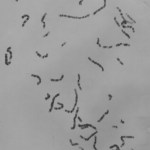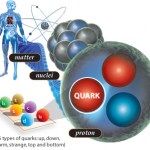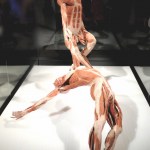cells
Only 1% of the human genome codes for proteins, which might make you wonder what the rest of the nucleotide sequence is good for. In 2012 the Encyclopedia of DNA Elements (or ENCODE) announced that a full 80% of the genome played a biochemical role, interacting with proteins in some way. But a new study says it takes only about 8% of our non-protein-coding genes to make us human. This is the percentage of genes that are 'conserved' by the human species: change one of these genes, and you'll alter the fitness of the individual. These genes evolve slowly (although not as slowly as protein-…
"The atoms come into my brain, dance a dance, and then go out - there are always new atoms, but always doing the same dance, remembering what the dance was yesterday." -Richard Feynman
Here you are, a human being, a grand Universe of atoms that have organized themselves into simple monomers, assembled together into giant macromolecules, which in turn comprise the organelles that make up your cells. And here you are, a collection of around 75 trillion specialized cells, organized in such a way as to make up you.
Image credit: J. Roche at Ohio University.
But at your core, you are still just…
On Pharyngula, PZ Myers deconstructs the hypothesis of two physicists who show an undue enthusiasm for biology. They claim cancer is caused by cells regressing from their modern, multicellular functionality to a "proto-metazoan" lifestyle of largely uncoordinated growth. Myers says their is no plausible avenue for such atavism, writing "you can’t take one of your cells, switch off a few genes, and set it free in the ocean to swim off and follow its primitive lifestyle." Considering the factors that really contribute to cancer, Myers concludes "scientists shouldn’t be looking for optimism,…
The other day, Amanda, who is currently teaching AP Biology, noted that among the various sources she had at hand, including a couple of textbooks, the number of cells that make up human body seemed to range from about five trillion to fifty trillion with a scattering of numbers in between. It is not clear why this number matters but I suppose if we want to impress students with the smallness of cells and the complexity of life it is worth pointing out, and if it is worth pointing out it might be worth getting it right. So, how many are there?
I believe the correct answer is in the upper…
Look in any biomedical laboratory, and you will find HeLa cells. Over 50 million tonnes of these cells have been grown in churning vats of liquid all over the world. They have been one of the most important tools in modern medicine, pushing forward our understanding of cancer and other diseases, and underpinning the polio vaccine, IVF, cloning, and more. None of these advanced would have been feasible without HeLa. Most scientists have used or seen them but most have no idea about their origin. It's time to find out.
In early 1951, there was only one place in the world where HeLa cells could…
The journey undertaken by newly generated neurons in the adult brain is like the cellular equivalent of the arduous upstream migration of salmon returning to the rivers in which they were hatched. Soon after they are born in the subventricular zone near the back of the brain, these cells migrate to the front-most tip of of the olfactory bulb. This is the furthest point from their birth place, and they traverse two-thirds of the length of the brain to get there.
The first leg of this epic journey - the departure of the newborn cells from the subventricular zone - involves some of the…


